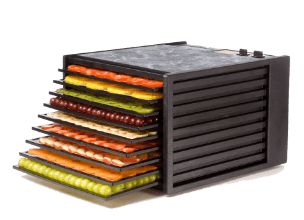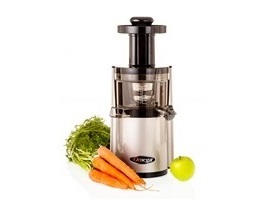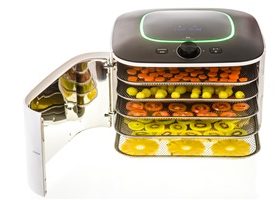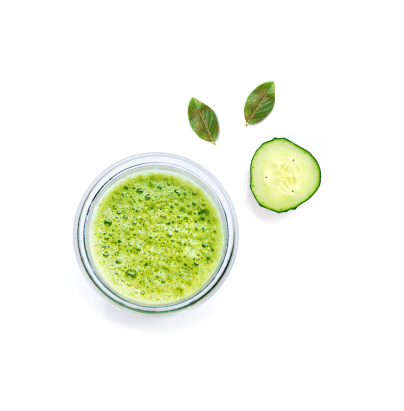Dehydrator FAQs
If you want to gain an in depth knowledge about dehydrating or drying your own food using a Dehydrator, we recommend this book. Here are a few frequently asked questions about dehydrators below. If you can’t find the answer you are looking for and would like to ask us something – click here
- What is a food dehydrator?
- Are dehydrators expensive to run?
- Are your food dehydrators suitable for use throughout Europe?
- What temperature should I dry my food at?
- How long does it take to dehydrate food?
- Why can’t I just use my oven?
- I live in a small apartment, which dehydrator is quietest?
- Can a dehydrator be used for anything besides food?
- What is the advantage of drying food yourself over buying in dried foods?
- Can I dry complete meals for use when I am backpacking?
- Why do I have to swap the trays during drying with a stacking dehydrator?
- What is the best way to store the food once it is dry?
- Which is the best food dehydrator?
Q: What is a food dehydrator?
A: Food dehydrators or dryers are kitchen appliances that are used to dehydrate or dry food by circulating warm air over the food surfaces. They offer precise temperature control at lower temperatures than a conventional oven. Drying with warm air at lower temperatures preserves more of the flavour and nutrition in dried foods. There are two main types of dehydrator; those with stacking trays that sit on top of or below a fan heater unit and those with removable shelves which dry with horizontal warm air flow from the rear and/or the sides.
Q: Are dehydrators expensive to run?
A: No. All electric dehydrators have a fan and a heating element but please don’t make the mistake of using their power rating as a guide to electricity consumption. The heating element in a dehydrator is controlled by a thermostat and provides just the right amount of heat to maintain a steady temperature. The energy used depends on a number of factors such as surrounding temperature and humidity, the quantity of ingredients being dried, the moisture content of the ingredients, the size or thickness of the food and the drying temperature selected. Using dehydration as a food preservation method adds very little to the cost of those foods, particularly if you dry in larger quantities, but it is impossible to state an exact power consumption due to the many variables. As a rough guide, for most food preserving applications your dehydrator will typically cost less then £1 to run for 24 hours, sometimes considerably less, especially if drying at lower temperatures. Average drying times depend on a number of variables but many common dehydrator tasks will average out at much less than 24 hours. For raw and living foods the average time may be a bit higher, but the energy cost per hour is lower because the heating element is using less power at the lower temperatures used by raw fooders. Dehydrating your own food is as cheap as chips – and fruit and vegetable chips are an example of the deliciously healthy snacks you can make with your dehydrator!
Q: Are your food dehydrators suitable for use throughout Europe?
A: Yes, like all our electrical appliances, all our dehydrators are 220/240 volt models suitable for use throughout all of Europe. We often have Excalibur dehydrators that are fitted with European power cords but in models where we have only UK plug versions, we supply a free plug adapter when we ship to our European customers.
Q: What temperature should I dry my food at?
That depends on your priorities. For example, raw food enthusiasts will want to dry at enzyme preserving low temperatures. Meat and fish should always be dried on the high setting initially for food safety reasons. The following is a rough guide to food types and temperatures:
Herbs and delicate items – 35°C (95°F)
Yoghurt making – 46°C (115°F)
Vegetables – 52°C (125°F)
Fruits – 57°C (135°F)
Meat and Fish products – 68°C (155°F)
Please note, we advise our customers to read one of the many authoritative books on the subject of using a dehydrator, to ensure that they are aware of all the methods of preserving foods safely.
Q: How long does it take to dehydrate food?
A: That depends on a number of variables so there is no fixed answer to this question. Dehydration times are determined by the temperature you want to dry at, the surrounding environment, the size of the pieces of food being dried, the desired texture of the end result and the overall moisture content of the food. So for example drying herbs and some leafy veg can take just a few hours whereas some meat products could take 24 hours or more, depending on the variables above. If you are new to using a dehydrator, an authoritative book such as ‘Preserve it Naturally’ or ‘The Dehydrator Bible’ will give you all the guidance you need on dehydration times and temperatures plus some great dehydrator recipes (we offer these books free of charge when you buy one of our premium dehydrator models)
Q: Why can’t I just use my oven?
A: Oven’s don’t offer precise temperature control at the lower temperatures used when dehydrating food, so its a bit hit and miss trying to use a conventional oven. Generally, accurate low drying temperatures are hard to achieve in an oven, so a dehydrator is better for preserving raw and living foods. Also, air circulation is important as stagnant warm air presents a food safety risk, so if your conventional oven doesn’t circulate air sufficiently there is an additional risk at low temperatures, particularly when drying meat or fish. Controlling the lower warm air temperatures is essential if you want to preserve the maximum nutritional values in the food, as well as preserving and intensifying the natural flavours and aromas.
Q: I live in a small apartment, which dehydrator is quietest?
A: The Sedona Food Dehydrator by Tribest is the quietest in our range offering near silent operation, with a ‘night mode’ setting. Closely after that in quietness, the L’Equip Filterpro is a more affordable option but still with full digital control.
Q: Can a dehydrator be used for anything besides food?
A: Dehydrators are very versatile and can be used to dry a wide range of items. We have sold dehydrators for many diverse uses to different kind of customers. They can be used to dry clay and metal jewellery pre-firing, we have sold them to makers of cake decorations, craftspeople who use them to dry flowers and make potpourri, we have even sold an Excalibur dehydrator to a client who uses it to dry and preserve old cine film for safe storage. UK Juicers team member Paul uses his to make natural dog treats for his ‘raw food dogs’, Dodger and Charlie. They are used by naturopaths to dry ingredients like roots and herbs for making natural remedies. (If you use a dehydrator for something unusual, please let us know and we’ll mention it here.)
Q: What is the advantage of drying food yourself over buying in dried foods?
A: The main advantage is that you control the whole process from selecting quality ingredients through to determining a drying method that preserves the optimum nutritional content. Generally your own dehydrator recipes will also work out a lot cheaper than shop-bought alternatives. If you are drying foods to preserve their health benefits, with your own dehydrator you know the provenance of the ingredients and can control the quality of the results.
Q: Can I dry complete meals for use when I am backpacking?
A: Dehydrators are perfect for ensuring quality nutrition when you are enjoying outdoor pursuits such as backpacking, camping, climbing etc. You can dehydrate complete meals like stews and casseroles, make trail snacks and mixes, the list is endless and we have a great book on the subject called ‘Backpack Gourmet’
Arctic Explorer Gary Rolfe uses his Excalibur dehydrator to dry lightweight protein and energy rich food to increase the quantity and quality of food he takes with him on his dog sled expeditions. In such extreme circumstances if things get tricky having good quality nutrition on hand can be a huge factor in surviving any adversity. Expedition food from a food dehydrator is generally a more natural, nutritionally superior product to the expensive, freeze dried pre-packed products that are available.
Q: Why do I have to swap the trays during drying with a stacking dehydrator?
A: Stacking tray dehydrators, which dry from the bottom up, create a temperature gradient which means the top trays will be a little bit cooler in some cases, particularly if you are using extra trays to increase capacity. To get evenness of drying in this type of expandable system you have to occasionally move the top trays to the bottom to even out the drying temperature and time. But it’s important to recognise the distinct advantage you have anyway in terms of the number of trays you use not being fixed. If your are just using the standard number of trays with a stacking dehydrator, tray rotation is not really an issue. It’s not a big inconvenience even when using extra trays but if you want to dehydrate food without monitoring the progress, a horizontal air flow type like the Excalibur or Sedona dehydrator may be a more appropriate choice.
Q: What is the best way to store the food once it is dry?
A: Any sterilised, rigid airtight container offers a convenient storage method and the dried food can be stored for many months without the risk of spoiling. Food should fill the containers to minimise the volume of air left in the container. Some people will go one step further and use a vacuum sealer to exclude air and preserve more of the nutrients over time. Vacuum sealed bags take up less space too
Q: Which is the best food dehydrator?
A: With our entire product range we tend not to recommend one product over another because what’s best for one person may not work as well for someone else. If you are trying to decide which one to go for, our choosing your dehydrator section gives an unbiased look at the main differences between models and types.
 Register / Login
Register / Login 













